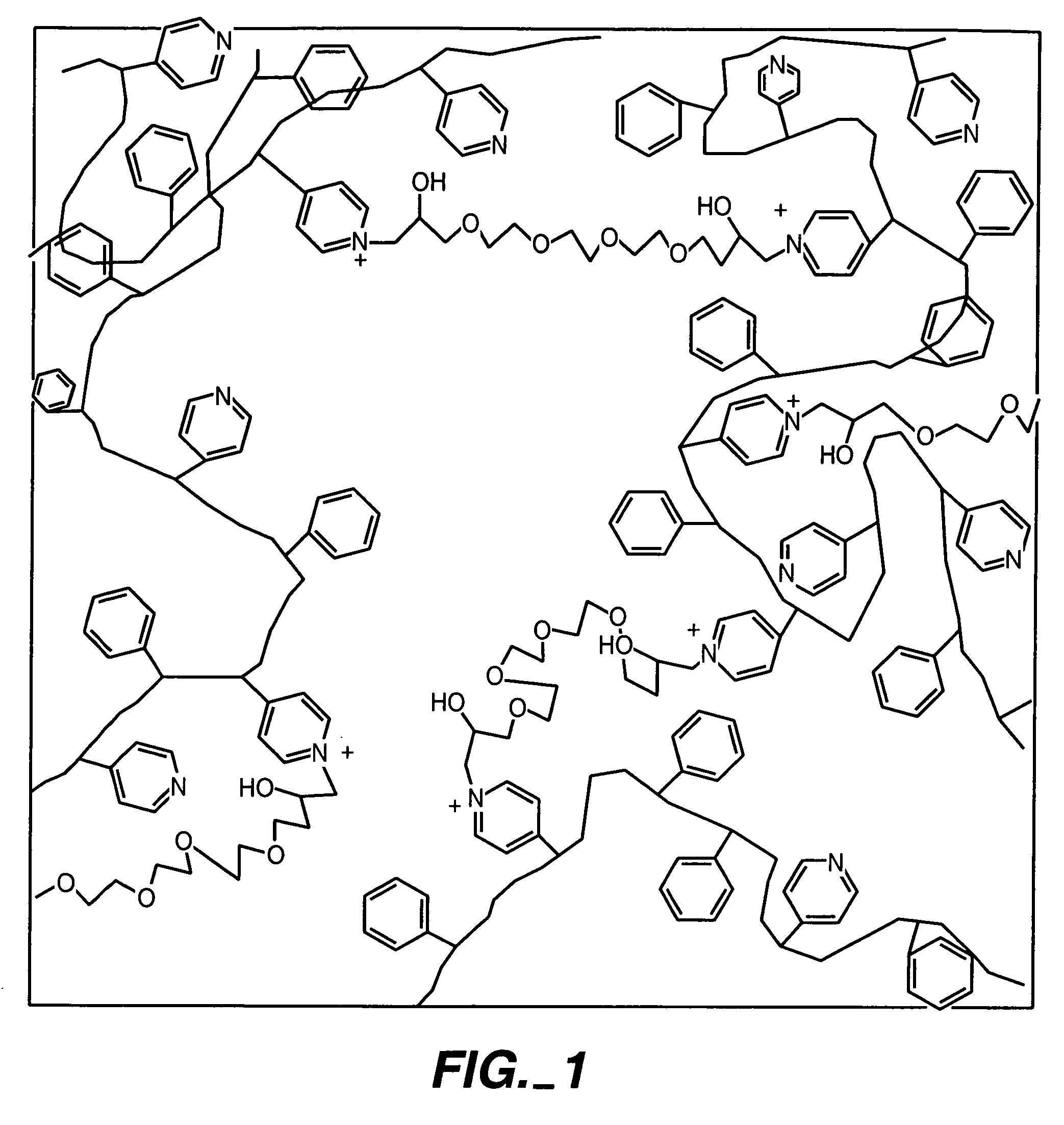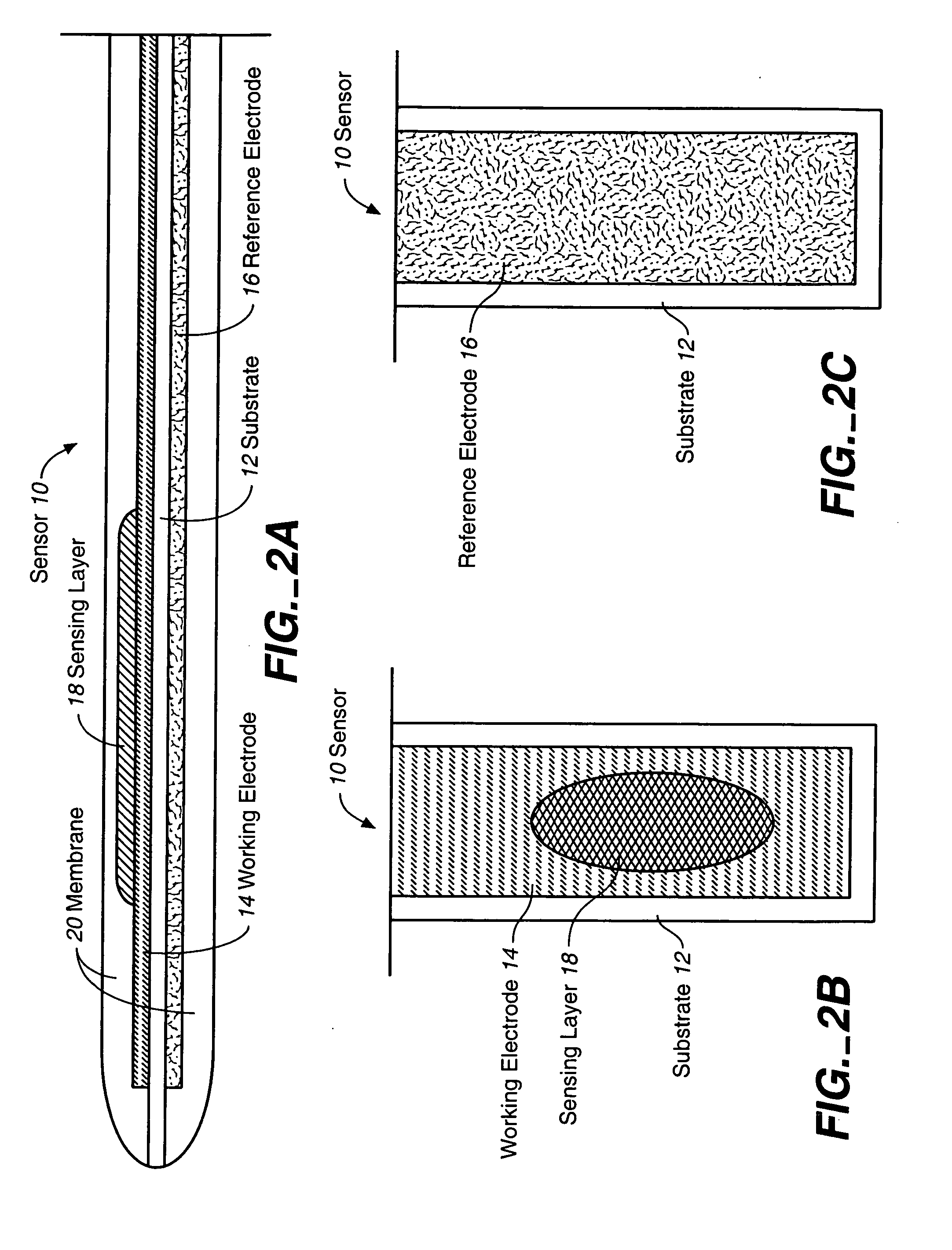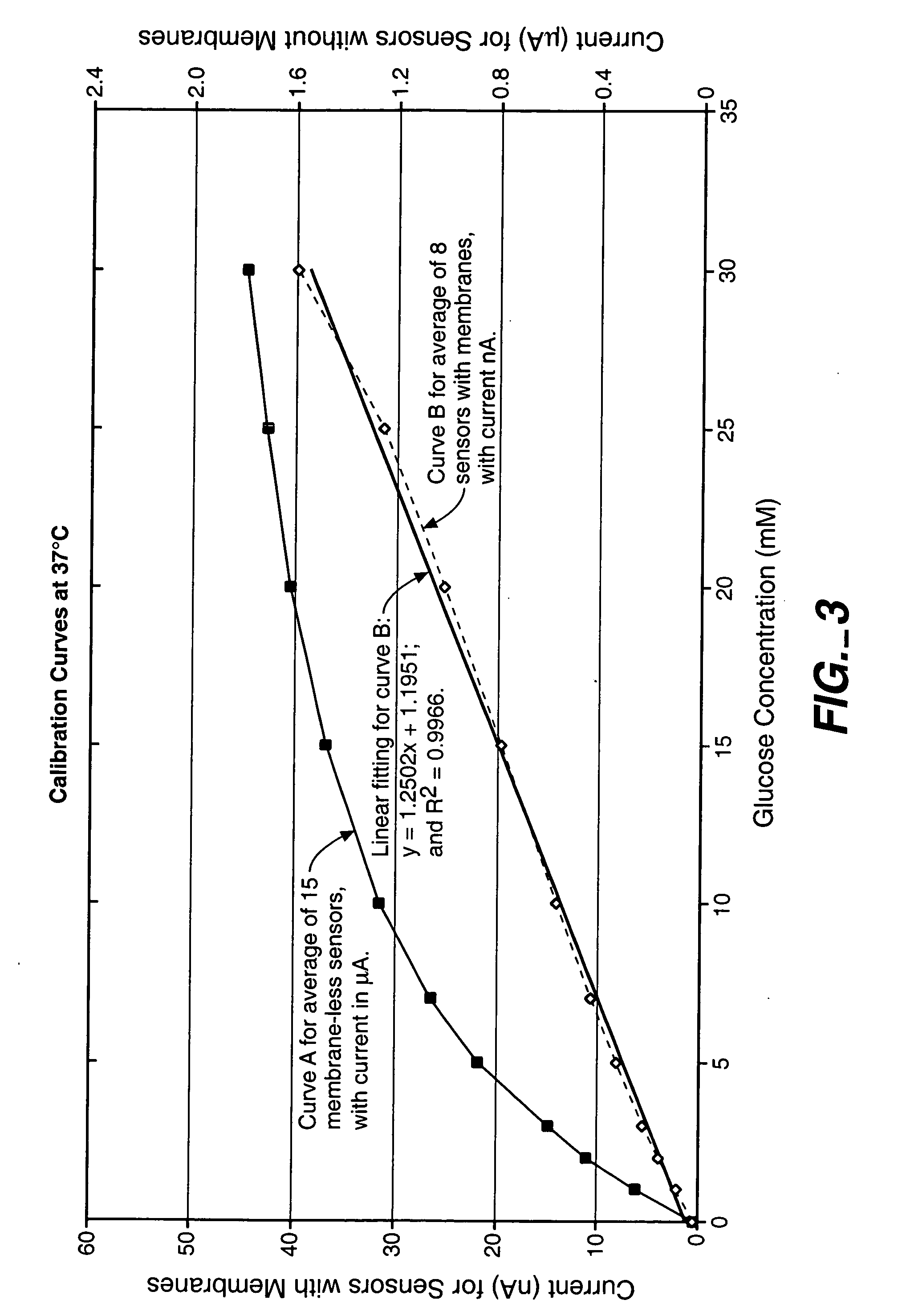Biosensor membranes composed of polymers containing heterocyclic nitrogens
a biosensor and heterocyclic nitrogen technology, applied in the direction of catheters, instruments, separation processes, etc., can solve the problems of difficult manufacture of known membranes, glucose-diffusion-limiting membranes, and no longer controlled measurement output signals, etc., to achieve large signal-to-noise ratio, reduce the effect of sensitivity and stability
- Summary
- Abstract
- Description
- Claims
- Application Information
AI Technical Summary
Benefits of technology
Problems solved by technology
Method used
Image
Examples
example 1
Synthesis of a Polymer of Formula 3
[0058] By way of illustration, an example of the synthesis of a polymer of Formula 3 above, is now provided. A solution of poly(4-vinylpyridine-co-styrene) (˜10% styrene content) (20g, Aldrich) in 100 mL of dimethyl formamide (DMF) at 90° C. was stirred and 6-bromohexanoic acid (3.7 g) in 15-20 mL of DMF was added. The resulting solution was stirred at 90° C. for 24 hours and then poured into 1.5 L of ether, whereupon the solvent was decanted. The remaining, gummy solid was dissolved in MeOH (150-200 mL) and suction-filtered through a medium-pore, fritted funnel to remove any undissolved solid. The filtrate was added slowly to rapidly stirred ether (1.5 L) in a beaker. The resulting precipitate was collected by suction filtration and dried at 50° C. under high vacuum for 2 days. The polymer had the following parameters: [n / (n+l+p)]×100%≈10%; [l / (n+l+p)]×100%≈80%; and [p / (n+l+p)]×100%≈10%.
example 2
Synthesis of a Polymer of Formula 5
[0059] By way of illustration, an example of the synthesis of a polymer of Formula 5 above, is now provided. A solution of poly(4-vinylpyridine-co-styrene) (˜10% styrene) (20 g, Aldrich) in 100 mL of anhydrous DMF at 90° C. was stirred, methanesulfonic acid (˜80mg) was added, and then 2 g of methoxy-PEG-epoxide (molecular weight 5,000) (Shearwater Polymers, Inc.) in 15-20 mL of anhydrous DMF was added. The solution was stirred at 90° C. for 24 hours and 1,3-Propane sultone (2.32 g) in 10 mL of anhydrous DMF was added. The resulting solution was continuously stirred at 90° for 24 hours, and then cooled to room temperature and poured into 800 mL of ether. The solvent was decanted and the remaining precipitate was dissolved in hot MeOH (˜200 mL), suction-filtered, precipitated again from 1 L of ether, and then dried at 50° C. under high vacuum for 48 hours. The resulting polymer has the following parameters: [n / (n+m+l+p)]×100%≈10%; [m / (n+m+l+p)]×100%...
example 3
Synthesis of a Polymer Having a Polyhydroxy Modifier B
[0060] By way of illustration, an example of the synthesis of a polymer having a polyhydroxy modifier B, as schematically illustrated below, is now provided. Various polyhydroxy compounds are known for having biocompatibility properties. (U.S. Pat. No. 6,011,077.) The synthesis below illustrates how a modifier group having a desired property may be attached to the polymer backbone via a linker.
1,3-propane sultone (0.58 g, 4.8 mmoles) and 6-bromohexanoic acid (1.85 g, 9.5 mmoles) are added to a solution of poly(4-vinylpyridine-co-styrene) (˜10% styrene) (10 g) dissolved in 60 mL of anhydrous DMF. The resulting solution is stirred at 90° C. for 24 hours and then cooled to room temperature. O—(N-succinimidyl)-N,N,N′,N′-tetramethyl-uronium tetrafluoroborate (TSTU) (2.86 g, 9.5 mmoles) and N,N-diisopropylethylamine (1.65 mL, 9.5 mmoles) are then added in succession to the solution. After the solution is stirred for 5 hours, N-meth...
PUM
| Property | Measurement | Unit |
|---|---|---|
| temperature | aaaaa | aaaaa |
| volume ratio | aaaaa | aaaaa |
| pH | aaaaa | aaaaa |
Abstract
Description
Claims
Application Information
 Login to View More
Login to View More - R&D
- Intellectual Property
- Life Sciences
- Materials
- Tech Scout
- Unparalleled Data Quality
- Higher Quality Content
- 60% Fewer Hallucinations
Browse by: Latest US Patents, China's latest patents, Technical Efficacy Thesaurus, Application Domain, Technology Topic, Popular Technical Reports.
© 2025 PatSnap. All rights reserved.Legal|Privacy policy|Modern Slavery Act Transparency Statement|Sitemap|About US| Contact US: help@patsnap.com



